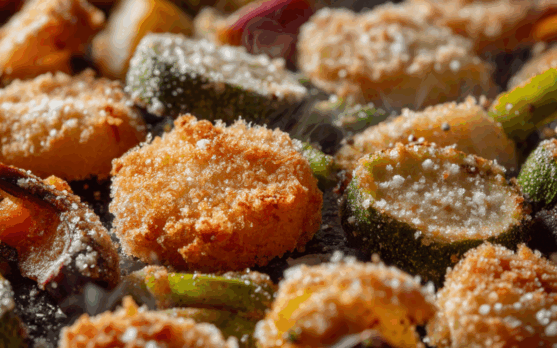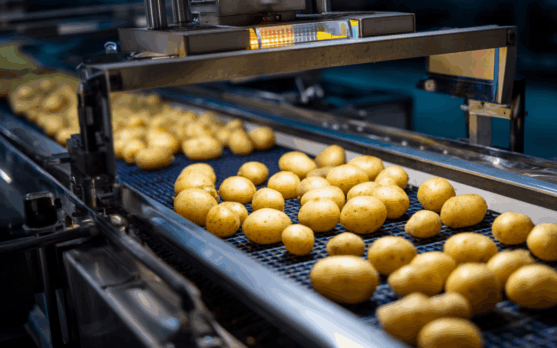Rewriting the Freeze
Freezing isn't just cold—it’s complex. Behind every perfectly preserved pea, berry, or filet lies a symphony of smart engineering. In this episode, we explore how the next generation of freezing systems—IQF, cryogenic methods, pumpable ice—are reshaping texture, reducing waste, and setting new standards in sustainability.

If you thought freezing meant just dropping temperature quickly, think again. Today’s advanced freezing techniques are more like controlled artistry—a detailed choreography of time, cold, and science designed to preserve flavor, texture, and nutritional value.
Take IQF—Individually Quick Frozen. You’ve seen it: peas that don’t clump, berries that stay firm, shrimp that remain separately frozen. But the secret lies in how fast and precisely the items pass through freezing tunnels. Ultra-low blasts of chilled air or cryogenic sprays freeze the surface so instantly that cell walls don’t rupture; everything stays intact. That means less mush, more snap.
But IQF alone isn’t enough. Enter cryogenic freezing—where liquid nitrogen or carbon dioxide hits product surfaces at near-instant speed. It’s ideal for delicate foods: herbs, pasta, even gourmet dishes. The speed prevents large ice crystals from forming, locking in flavor and color. In trials, chefs report that cryo-frozen basil looks, tastes, and smells more like fresh-picked—even after months in a freezer.
A newer twist is pumpable ice technology. Imagine a slurry of supercooled ice crystals that flows like liquid—circulating around product batches to freeze them from all sides evenly. Factories using it say it reduces freeze time by nearly 30% and reduces energy use, since the thermal mass is shared. It’s genius minimalism: same result, less energy and time.
These innovations don’t just improve quality—they change production dynamics. Frozen food used to be seasonal. Now it’s whole-year reliable. Berries can be frozen in summer and still deliver “just-picked” quality at Christmas. Fish caught in November can taste as fresh as the day it was frozen, months later in Southeast Asia. That gives brands flexibility and consumers consistency.
The environmental impact is real. Traditional freezing wastes electricity, water, and often product during clumping or frost damage. With smart systems, there’s less energy use, less waste during transitions, and fewer rejected batches. That means a smaller carbon footprint—not a marketing claim, but a production reality.
Add to that modular freezing units—scalable pods that plants can snap into existing lines. Want to boost capacity? Add another module. Need to switch product types? That module can handle it. That structural agility speeds up rollouts and reduces investment risk.
Then there’s data. Sensors measure temperature inside packs and tunnels, pulse by pulse. AI systems adjust airflow, slurry speed, or cryo pressure on the fly. One engineer noted that their system adjusted freezing profiles across shifts, ensuring batch uniformity no matter the upstream input. It’s freezing with IQ—intelligent and responsive.
Eliminating over-freezing is another win. Over-frozen food—think freezer-burned meat or icy fruit—was common. Now, heat mapping combined with smart control prevents that. Precious cuts remain juicy. Smoothie packs stay smooth. Every gram counts.
So why is this wave so crucial? Because quality drives trust. Not flashy claims, but the bite you take and the texture you feel. If customers know your frozen product pops fresh, they’ll buy again. And that consistency translates into loyalty, not shelf-dust.
This wave also primes the industry for future automation layers. When freezing is smart, the rest of the line—sorting, packaging, logistics—aligns. It's like building a machine consciousness pixel by pixel, freeze by freeze.
And the best part? It’s already happening. Factories using cryo units, pumpable-ice chambers, or modular AI systems are reporting 10–25% energy savings and up to 50% reduction in product loss. Not projections, but paybacks—operators seeing the numbers in their dashboards.
Part of the series: COLD LOGIC Series Overview
Explore the full editorial series.
- 01. Eyes on Ice — AI-powered vision is cleaning up the coldest lines in food
- 02. Robot Arms & Frozen Meals — From dumplings to dinner bowls—robots now build your food
- 03. Rewriting the Freeze — Faster. Smarter. Colder. Inside the new freezing race
- 04. Warehouses Without Humans — In cold storage, robots run the show—quietly and efficiently
- 05. The Code in Your Packaging — How data, tags, and smart sensors reinvent traceability
- 06. Digital Twins & Maintenance Minds — When simulations fix problems before they happen
- Bonus episode: Frozen Futures — What Comes Next
Conclusion
The art of freezing is being rewritten—not just with cold, but with brainpower. New systems protect texture, taste, and nutrition while cutting waste and energy. It’s more than a tech upgrade—it’s the foundation of a smarter, more sustainable frozen food future.
Essential Insights
Advanced freezing tech—IQF, cryogenic, pumpable ice—redefine quality and efficiency. They sharpen flavor, reduce environmental impact, and pave the way for smart, modular production.




